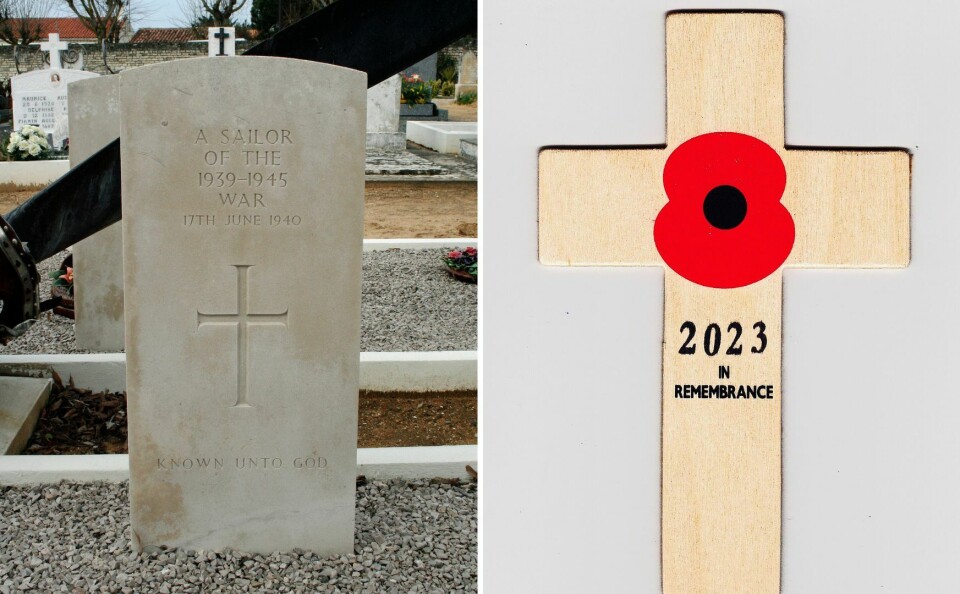-
Long queues for opening of Shein store in Paris despite child sex doll row
World-first physical store for Chinese e-commerce giant embroiled in controversy
-
Gironde residents offered grant of up to €150 to protect home from burglary
The initiatives began after a spike in the number of break-ins
-
Walkers warned over strong waves in France this week
Over 400 walkers were stranded along the northern coast last year due to tidal changes
Britons lay crosses at Commonwealth war graves in south-west France
They are aiming to put remembrance crosses on all graves across the region of Nouvelle-Aquitaine this year

Members of the British community in south-west France are on a mission to lay crosses on all 377 Commonwealth war graves in Nouvelle-Aquitaine by the end of the year.
The project is a joint effort between the Bordeaux & South-West France branch of The Royal British Legion (RBL), The Royal Air Force Association Sud-Ouest, The Bordeaux British Community and the Aquitaine Armed Forces and Veterans Breakfast Clubs.
‘We want crosses at all Nouvelle-Aquitaine war graves’
“At some point, a few of our members decided to lay crosses at cemeteries in their area,” said Duncan Andrews, chairman of the local RBL.
“Two of those involved have recently died. People want to continue it, but I thought we could expand and cover all the war graves in Nouvelle-Aquitaine.”
Almost half (182) of those are found in Charente-Maritime, while there are 71 in Gironde, 32 in Deux-Sèvres, and many more in surrounding departments. Many date back to World War One.
“Although fighting didn’t get this far, the Canadian forces had a forestry corps. Their job was to fell trees and prepare wood in the Landes area for the trenches in the Somme.
“There was quite a large number of Canadians working down here, and although they didn’t suffer from battle injury, a lot died from the flu epidemic in 1919.”
Read more: How to buy a Remembrance Day poppy in France – or a bleuet
4,000 people died on HMT Lancastria
There are also dozens of graves belonging to RAF and SAS soldiers from World War Two, as well as 94 burials from HMT Lancastria, which sank off the coast at Saint-Nazaire on June 17, 1940, during Operation Aerial to evacuate Allied forces and civilians from western France.
It is estimated that upwards of 4,000 people died on the Lancastria, making it one of the worst maritime disasters in British history.
“They died from bomb blasts, drowning, shrapnel, hypothermia, or being machine-gunned in the water,” Mr Andrews said.
“Dunkirk is considered the be-all and end-all of the evacuation process, but when the Lancastria sank, more people died than on the Titanic and Lusitania put together.
“She had a capacity for 1,300, and 300 crew, and it’s possible there were up to 9,000 people on board.
“Part of the reason people aren’t aware is that Churchill put a D-Notice on the disaster, as he said at the time there was too much bad news. He forgot to remove it, and the news wasn’t published until a month later.”
‘What does it cost to say thank you?’
Around 190,000 troops and 30-40,000 civilians are thought to have been evacuated as part of Operation Aerial.
The project aims to preserve the memory of the fallen, many of whom were buried with no name.
“What does it cost to say thank you?” Mr Andrews asked.
To find out more about the project or about local remembrance, contact Mr Andrews at andrewsin33@gmail.com
Related articles
Dozens of executed WW2 German soldiers possibly found in France
Hunt is on for American's family after WW2 bag found in French loft
From Nazi war camp survivor to fêted anti-poverty campaigner in France
























